Disability ambassadors successfully complete Zero-G flight
"What we did yesterday was absolutely historic," George Whitesides said.
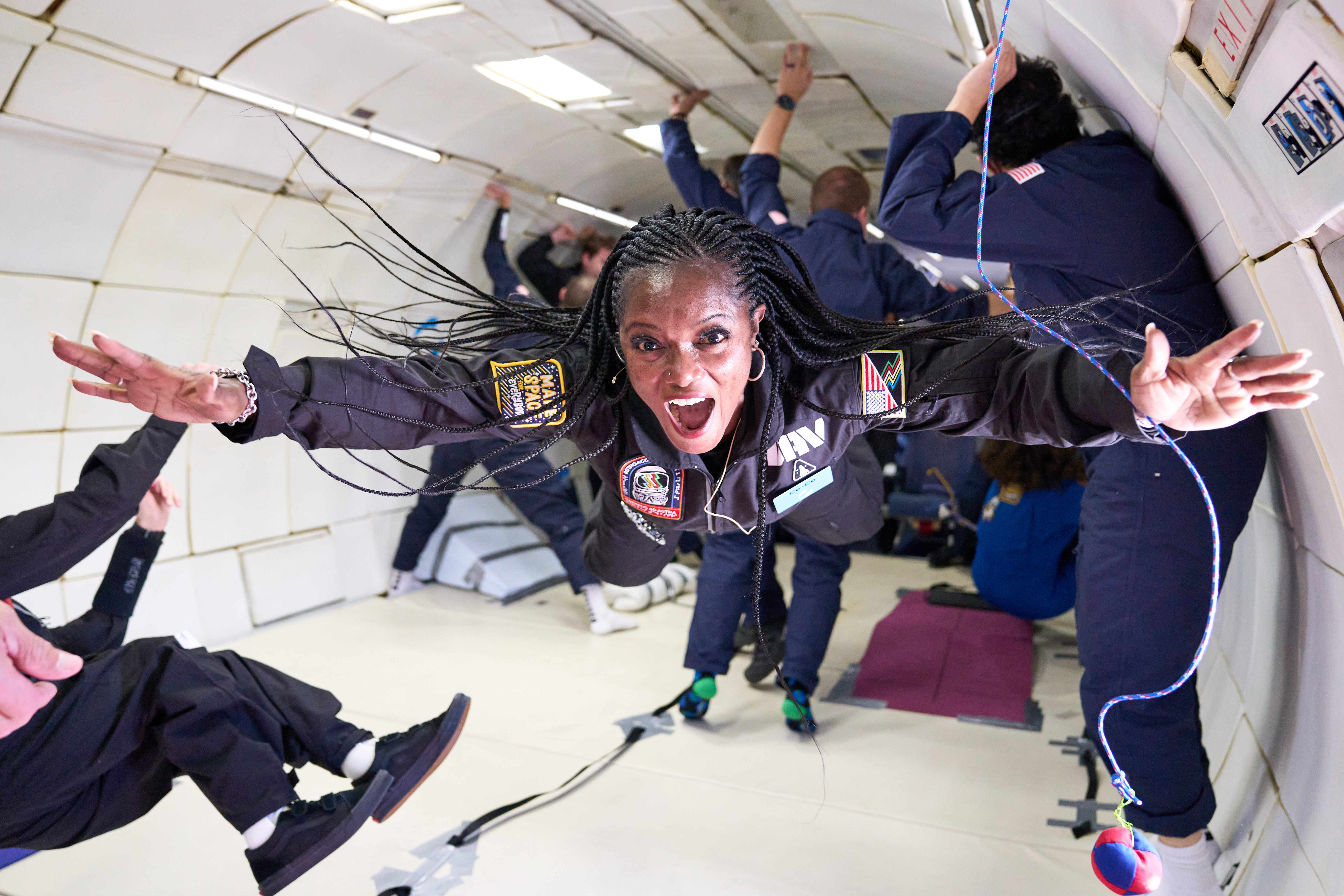
LONG BEACH, Calif. — A crew of 12 "disability ambassadors" successfully completed a weightless flight Sunday (Oct. 17) in the pursuit to make space accessible for all.
On Sept. 15, Hayley Arceneaux became the first person with a prosthesis to fly to space when she launched aboard SpaceX's private Inspiration4 orbital mission. And earlier this year, in February, the European Space Agency put out a call for people with disabilities to apply to become astronauts, or "parastronauts," with the agency. However, spaceflight is not yet fully available to those with disabilities: a problem that Mission: AstroAccess aims to solve.
AstroAccess — an initiative created with SciAccess, which works to make STEM (science, technology, engineering and mathematics) more accessible and inclusive — flew a crew of 12 "disability ambassadors" to an altitude of 32,000 feet (9,753 meters) on a weightless parabolic flight on Sunday to work towards a more inclusive and accessible future in space.
"What we did yesterday was absolutely historic," George Whitesides, the co-project lead of AstroAccess and chair of the Space Advisory Board for Virgin Galactic, said during a post-flight press conference in Long Beach, CA on Monday (Oct. 18).
Related: How to become an astronaut
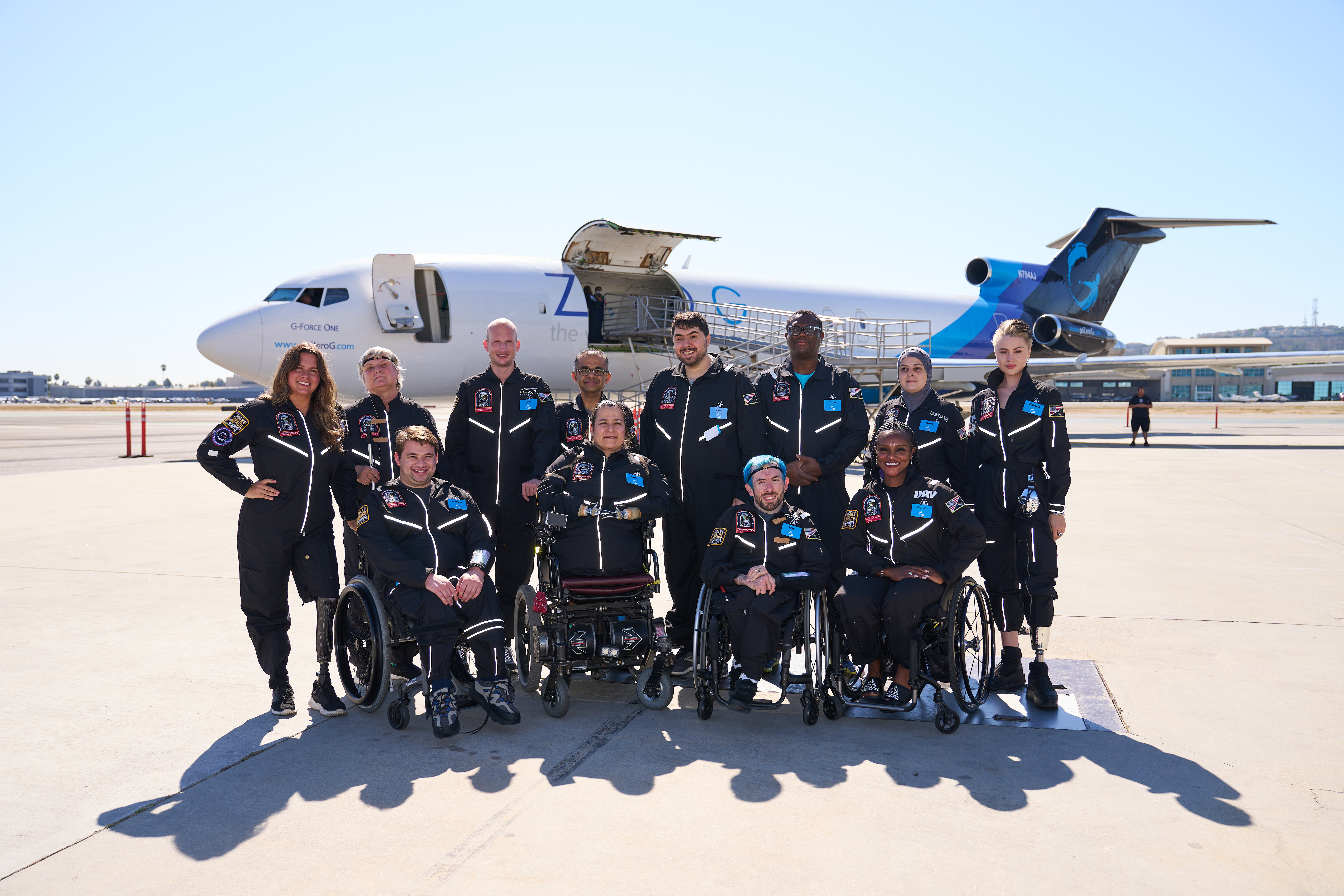
The flight took place aboard Zero Gravity Corporation's (Zero-G) "G-Force One" plane, which flies in a series of parabolas to create period feelings of both weightlessness and increased gravity inside the cabin.
The 12 ambassadors on board, which included people with mobility, vision and hearing disabilities, conducted demonstrations and experiments during the flight. They aim to use their experience to improve the understanding of what spacecraft environments could and should be like to be more inclusive and accessible for all.
Get the Space.com Newsletter
Breaking space news, the latest updates on rocket launches, skywatching events and more!
One of the ambassadors, Mary Cooper, an aerospace engineering and computer science student at Stanford University, shared her experience conducting a demonstration while weightless during the conference.
"I really wanted to demonstrate that I am able to maneuver and take care of my disability in the same way I do on Earth, so that I would be able to do that in the zero gravity environment," Cooper told Space.com during the conference. "So I took off my prosthetic leg, I even let it float around a bit, which is a surreal euphoric experience, to say the least. And then from there, I was able to also put it back on as well," Cooper added.
Cooper suggested that since the flight she already has ideas for improved accessibility in a spacecraft cabin, including the inclusion of a foot rail or a magnetic surface.
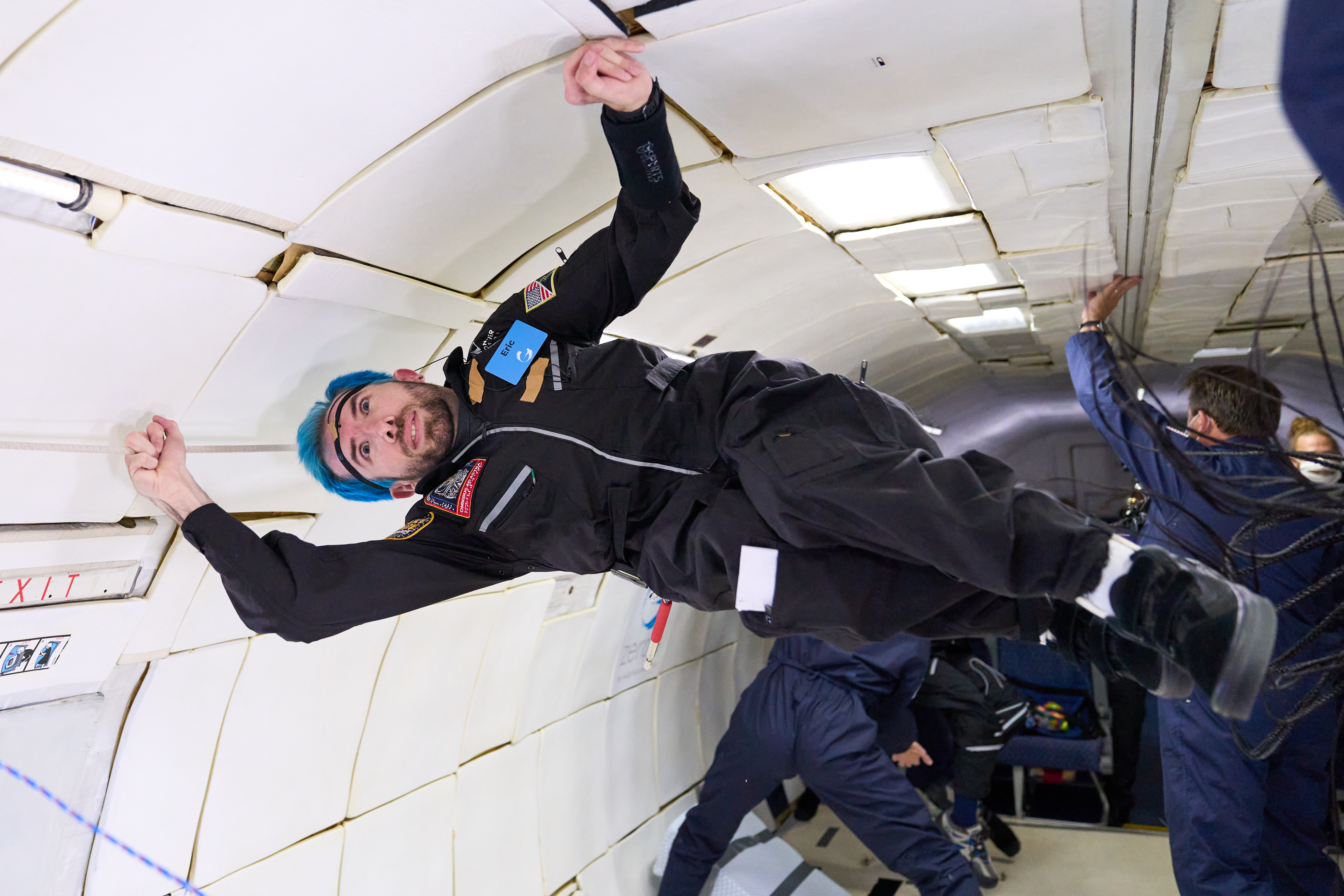
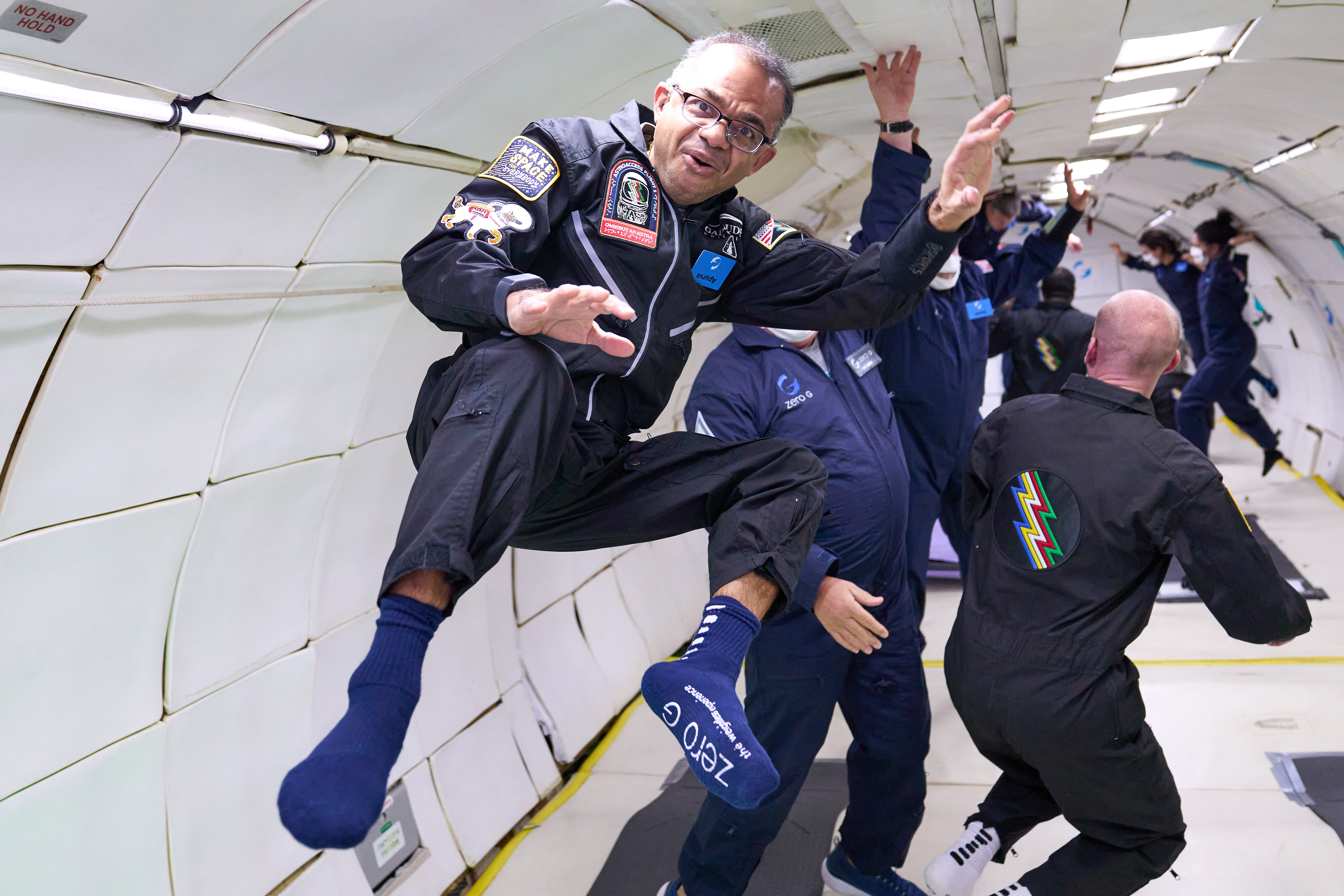
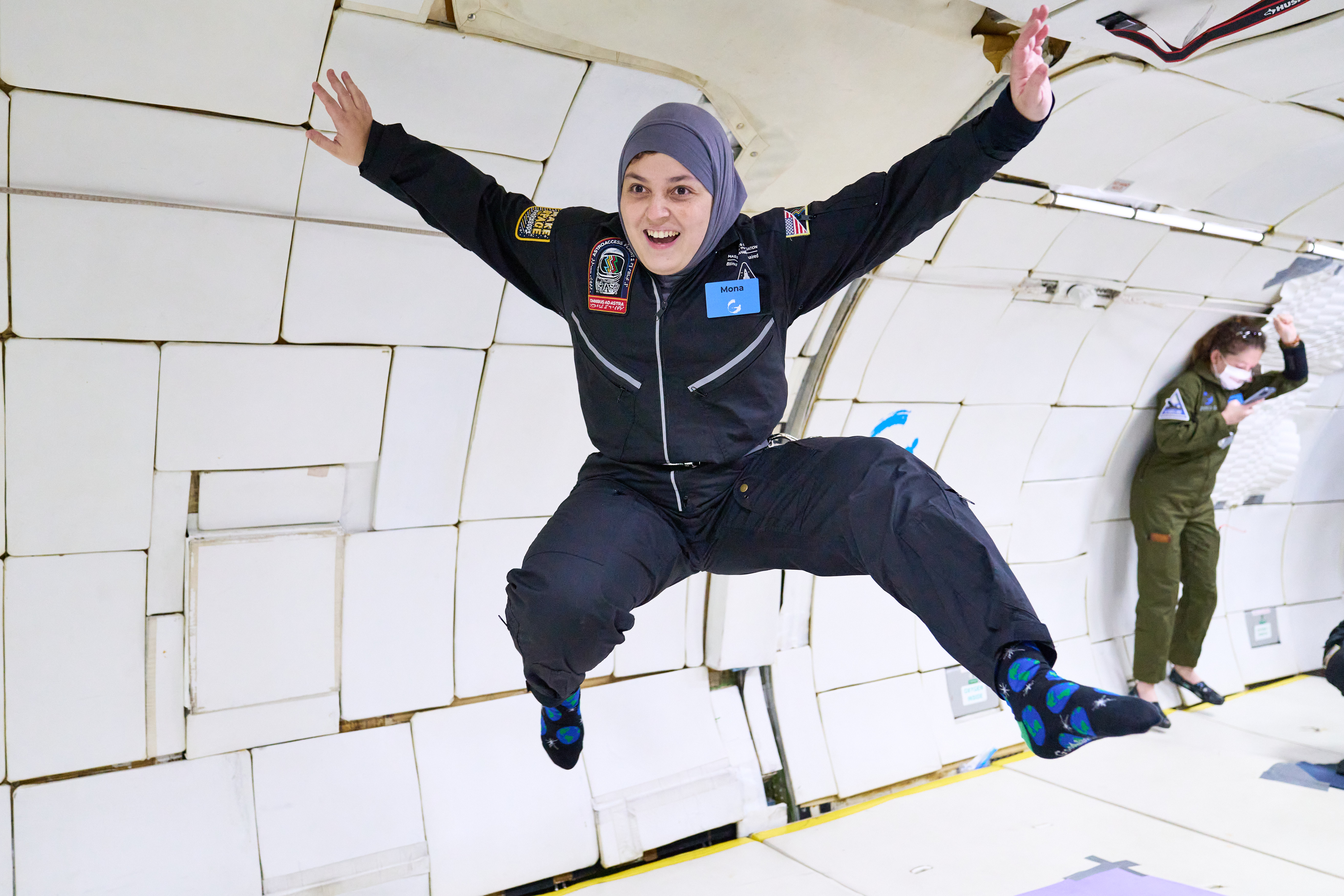
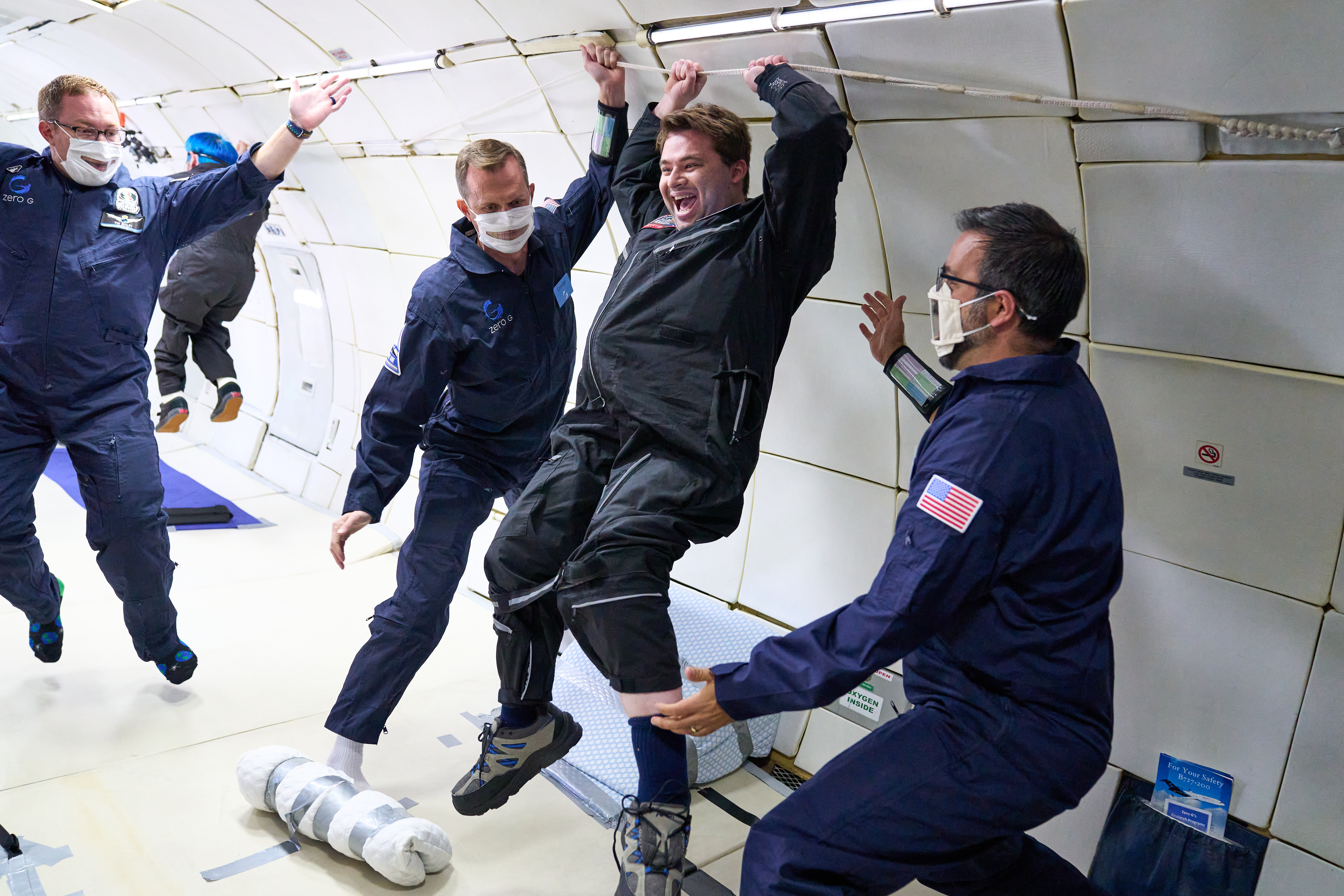
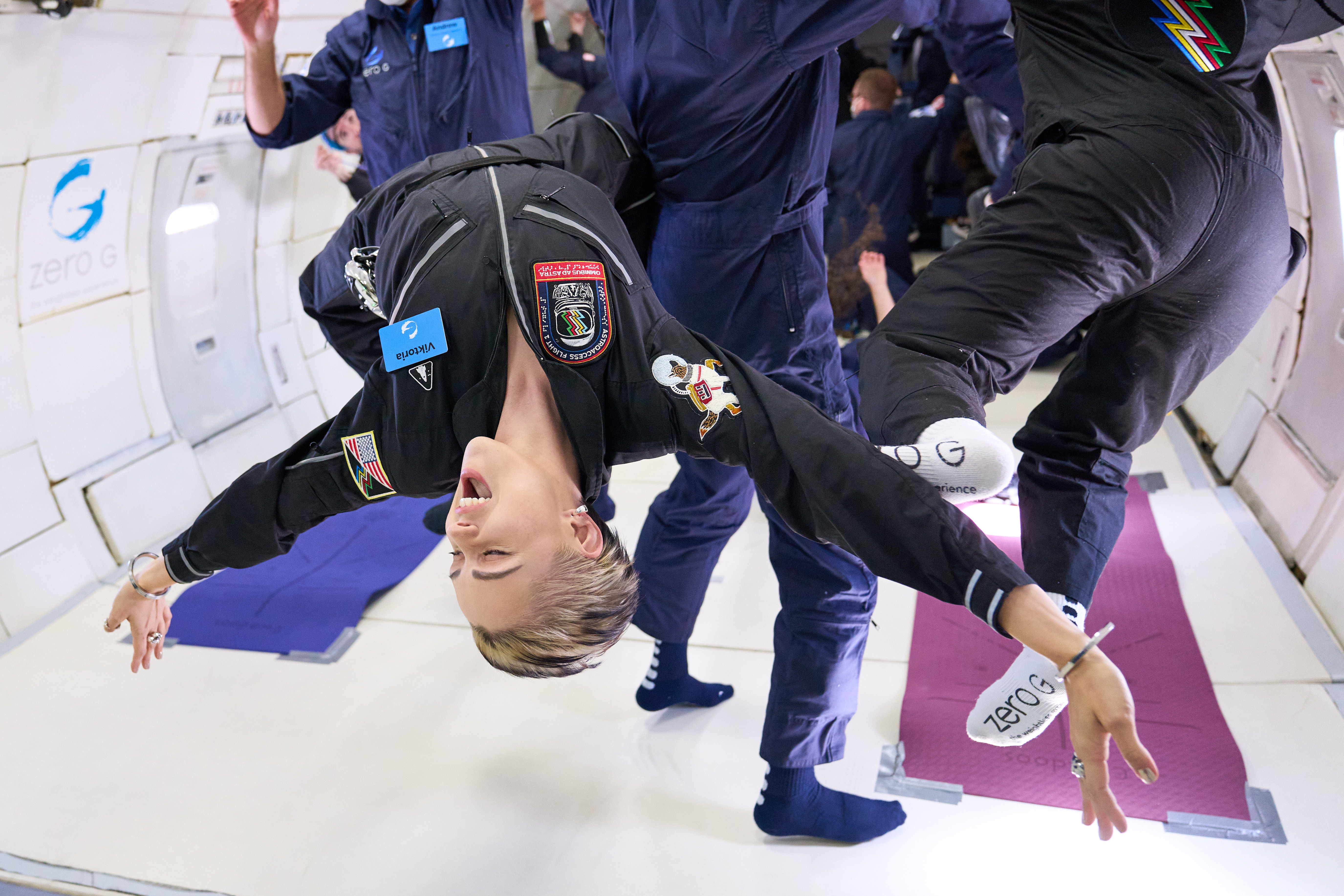
"We are making history here," Centra "Ce-Ce" Mazyck, one of the ambassadors and a U.S. Army veteran jumpmaster, said during the news conference. "Life truly begins at the start of the end of your comfort zone
"It doesn't stop here," Mazyck added. "I think we have a long way to go ... but I am so proud and elated about what's happening here. We are paving the way for the future."
"I am so grateful and I pray that this is not the last time I am in the air," she added.
Dana Bolles, one of the ambassadors who is also a science communicator at NASA, added that with AstroAccess, not only does the group aim to tangibly improve inclusive design in spaceflight, they also want to "show the potential of our community to the rest of the world."
Email Chelsea Gohd at cgohd@space.com or follow her on Twitter @chelsea_gohd. Follow us on Twitter @Spacedotcom and on Facebook.
Join our Space Forums to keep talking space on the latest missions, night sky and more! And if you have a news tip, correction or comment, let us know at: community@space.com.

Chelsea “Foxanne” Gohd joined Space.com in 2018 and is now a Senior Writer, writing about everything from climate change to planetary science and human spaceflight in both articles and on-camera in videos. With a degree in Public Health and biological sciences, Chelsea has written and worked for institutions including the American Museum of Natural History, Scientific American, Discover Magazine Blog, Astronomy Magazine and Live Science. When not writing, editing or filming something space-y, Chelsea "Foxanne" Gohd is writing music and performing as Foxanne, even launching a song to space in 2021 with Inspiration4. You can follow her on Twitter @chelsea_gohd and @foxannemusic.









